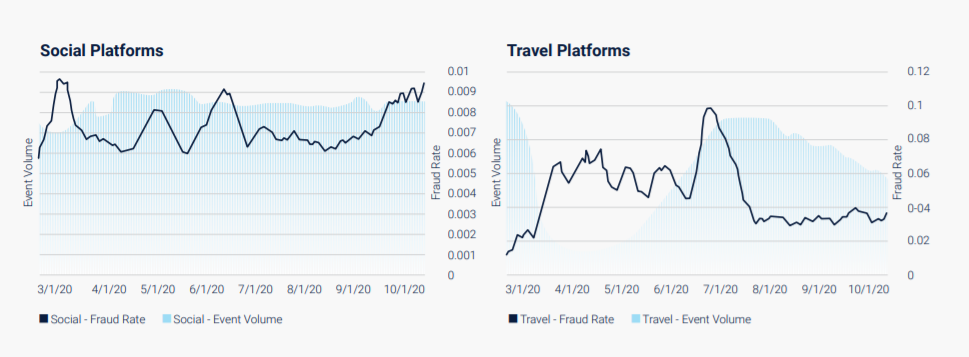7 Essential Travel Marketing Tips for Navigating the Return of Tourism
The world of travel has been in a fickle state since the beginning of March 2020.
Last year, the tourism industry suffered its biggest recorded decline ever.
We haven’t seen this many borders close down since the second-largest bookstore in the US went into liquidation back in 2011. (Sorry, Dad joke.)
But thanks to vaccines and other pandemic-related mitigations, there appears to finally be a light at the end of the tunnel.
In this article, you’ll learn where the travel industry is likely headed, how to prepare for it, and a few pro tips for staying ahead of the game.
Contents:
What’s trending in the world of travel marketing right now
People before profit
Sustainable tourism
Digital nomads
The 7 essential focus areas for managing the return of tourism
Safety
Flexibility
Communication
User experience
Content
Community
Security
Final advice for travel marketers
Ready to boost your travel marketing knowledge and leapfrog the competition?
Let’s get started.
Travel Marketing in 2021: What’s New?
Travel is making a comeback. And to prepare for it, you need to know where it’s headed.
Here’s a shortlist of a few top travel trends you should be aware of in 2021:
People before profit
It’s possible the unworried, simplistic version of travelling as we knew it may never fully return.
With so much stigma facing the travel industry these days, businesses will be forced to spend more time building brand trust and offering flexibility and less time trying to make a quick buck.
People no longer just want the cheapest, swiftest options. They want to feel safe and certain.
Travel companies that aren’t able to reassure travellers of their safety may very well never recover from the economical damage caused by the pandemic.
Prioritise your customers and they’ll prioritise you.
Sustainable tourism
If there was one good thing to come out of the global pandemic, it’s the improved health of our natural environment.
For example:
Studies have indicated that the number of deaths by roadkill has decreased in many countries. Including up to 50% of hedgehog deaths in Poland.
Aviation emissions dropped by 48% in 2020 from 2019, and total global carbon emissions dropped by 6.4%.
These auspicious signs have resulted in a wider recognition of an already-existing concept: Sustainable tourism.
The idea of travelling in a way that protects the industry, the environment, and the history and cultures we discover along the way has gained serious traction over the last year and a half.
Digital nomads
Digital nomads are travellers that work remotely from their laptops while exploring the world.
After getting a taste for the remote-work lifestyle, it’s no surprise that many of us see few reasons to return to the office, virus or no.
Similarly, those that have spent their time in lockdown focusing on entrepreneurial ventures are also beginning to appreciate the value of location independence.
And with several countries now offering digital nomad visas, the travel industry could soon see a rise in the number of remote workers buying up one-way tickets, ready to give the nomadic life a try.
Travel companies should consider how they can adapt their products and services to better suit the new generation of remote workers.
With these insights in mind, it’s time to look at where you can start applying them today.
Keep reading.
7 Essential Travel Marketing Tips For Navigating The Return Of Tourism
With one eye on the latest travel trends, you (the clever travel marketer) are almost ready to tackle the return of tourism.
The following list of focus areas and actionable tips will give you that final push needed to nail your next brand strategy meeting.
Tell the boss to get your bonus check ready.
1. Prioritise safety
Just because people are eager to travel, there’s no reason to assume they’re willing to sacrifice health and safety to do it.
In fact, given the known dangers of COVID-19 and its unfortunate association with tourism, the shrewder option seems to be the opposite.
What does this mean for you?
Above all else, it means that traveller safety is not to be overlooked – regardless of your travel niche.
Promote the safety protocols of your company everywhere:
On your website homepage, in your newsletters, right before the payment screen…
Anywhere a customer’s concern over safety might lead to a lost sale is the perfect place to offer reassurance.
Take the time to resolve any holes in your current safety plan. Then inform your customers of the efforts you’ve taken.
2. Be flexible
Good marketers know the power of answering customer objections before they’ve raised them.
And if there’s one concern that all travellers in 2021 share, it’s fear of the unpredictable.
We’ve seen how quickly things can change beyond our control: Flights get cancelled, borders close to tourists, events get postponed… and then postponed again.
Our proverbial hackles are now permanently raised, especially when it comes to booking anything travel-related.
Thus, an overwhelming need for flexibility from brands in the tourism industry has emerged.
What does this flexibility look like?
It might be guaranteed full refunds for unexpected cancellations.
If you’re an airline, it probably means adjustable flight dates.
Whatever relevant service you can offer to assuage a customer’s fears of regret when they purchase your product, do it.
Potential reimbursements are a lot better than missed sale opportunities due to poor planning.
More flexibility = Less-reluctant travellers.
3. Keep in touch with your followers
Consistent communication is vital in reassuring travellers that you’re there for them, should anything go wrong.
The simplest way to do this is through email.
Email marketing is about so much more than product promotion these days; it’s your best shot at strengthening the brand/consumer relationship.
And with strength, comes trust.
If you’re selling flights or tours, keep customers updated with the status of their recent purchases. Ease their worry over cancellations right up until it’s time to go.
If your product is in any way impeded by travel restrictions, testing protocols, or political issues, send informative updates so your customers know what to expect and feel prepared for whatever may come.
Focus less on selling and more on being helpful and relevant.
In other words…
4. Focus on user experience
UX (User Experience) is one of the most powerful tools a brand can sharpen, especially during this new tide of digital travel marketing.
The main goal of UX is to provide experiences that keep a user loyal to your brand.
By simplifying and smoothening the interactive process of your system (app, software, website), your customers will begin to associate your brand with positive online experiences.
This is what will keep them coming back for more.
As you might’ve heard, customer retention is often a lot cheaper than acquisition.
It can also be incredibly profitable.
One Harvard study determined that increasing customer retention rates by 5% increases profits by 25% to 95%.
Travellers are shopping with holidays in mind.
They want to feel like they’re already there, even if they’re just browsing beach towels or hiking gear.
By implementing great UX, you’re keeping your customers in a vacation state of mind.
5. Deliver unique and valuable content
The global pandemic saw the already-accelerating shift towards digital tourism hit hyperspeed-mode.
While we struggled to pursue our dreams of white sand beaches and alpine resorts, the global travel community migrated to the only place where it was possible to travel to anywhere, at any time: The Internet.
And what were we searching for?
The same thing as everybody else that’s scribbling into Google’s search bar: Content.
High-quality, high-value, entertaining content.
And the search for good content continues.
46% of Internet-users admit to using some form of ad-blocker while browsing the web. Possibly the best way to market your product these days is to give your customers the knowledge and enjoyment they’re constantly looking for through premium content.
This could include:
Articles
Webinars
Vlogs
Facebook live sessions…
...whatever.
Maybe you’ll write a blog with essential tips to help travel marketers navigate the return of tourism. (Please don’t.)
Try to be everywhere your customers are hanging out online. Become their number one source for industry-related guidance and entertainment. Share and get shared.
People don’t watch television for the broadcasters. And they certainly don’t watch it for the ads. They watch it, of course, for the great (or awful) content that plays on their channels.
But it’s the broadcasters that make the big bucks.
Don’t be an ad break; be a broadcaster.
6. Build a community
What’s better than keeping your followers up to date with the latest travel trends and news stories?
Letting other users do it for you.
Creating an online community – whether it be a Facebook group, an Internet forum, or an app-based support group – is a powerful marketing tactic for multiple reasons.
Here are a few benefits of building an online community:
Free testimonials and reviews.
If there’s an online space specifically related to your product, there’s a good chance that’s where people will talk about it. Here, you can learn what people love, what they don’t love, and what they’d like to see in the future.
It encourages outsiders to buy your product.
Human psychology indicates that people are more inclined to buy something if they know other people have already bought it. Communities operate as excellent social proof for swaying new customers.
You’ll earn more brand trust.
An online community is a way to get your brand seen as an ally by customers, instead of just another business. The more you get involved with what they’re doing outside of the purchasing process, the more your customers will feel connected to your brand.
Humans hate feeling excluded.
If two friends start talking about the awesome online travel community they’ve just joined, chances are Friend #3 is going to beg them for a link to the sign-up page.
No community, no Friend #3.
7. Security is everything
In 2020, we saw reports of cybersecurity fraud rise after the world went into lockdown.
This was true across social platforms and travel platforms, as demonstrated in the below charts from leading fraud detection company DataVisor’s recent report:
The report analyzed 128 billion events and over 2 billion users. With so many scammers taking advantage of online users, there’s never been a more essential time to go all-in on security.
Not only should you be ensuring all customer data and transactions are securely encrypted and protected, but you should also be relieving their concerns over digital theft at every chance you get.
Include a security message on your travel website homepage, especially at any screen that asks for customer information or credit card data.
Do everything you can to let travellers know that you’re trustworthy, professional, and authentic the second they come across your brand.
And more importantly, protect their personal information from scammers at all costs.
Looking for more travel marketing advice?
If you’re interested in learning more about digital travel marketing, why not check out some of my other blogs for a deeper dive:
If you’re curious about how a travel copywriter could help boost your sales and garner more leads for your business, book a free consultation with me here.
Happy travel marketing!






